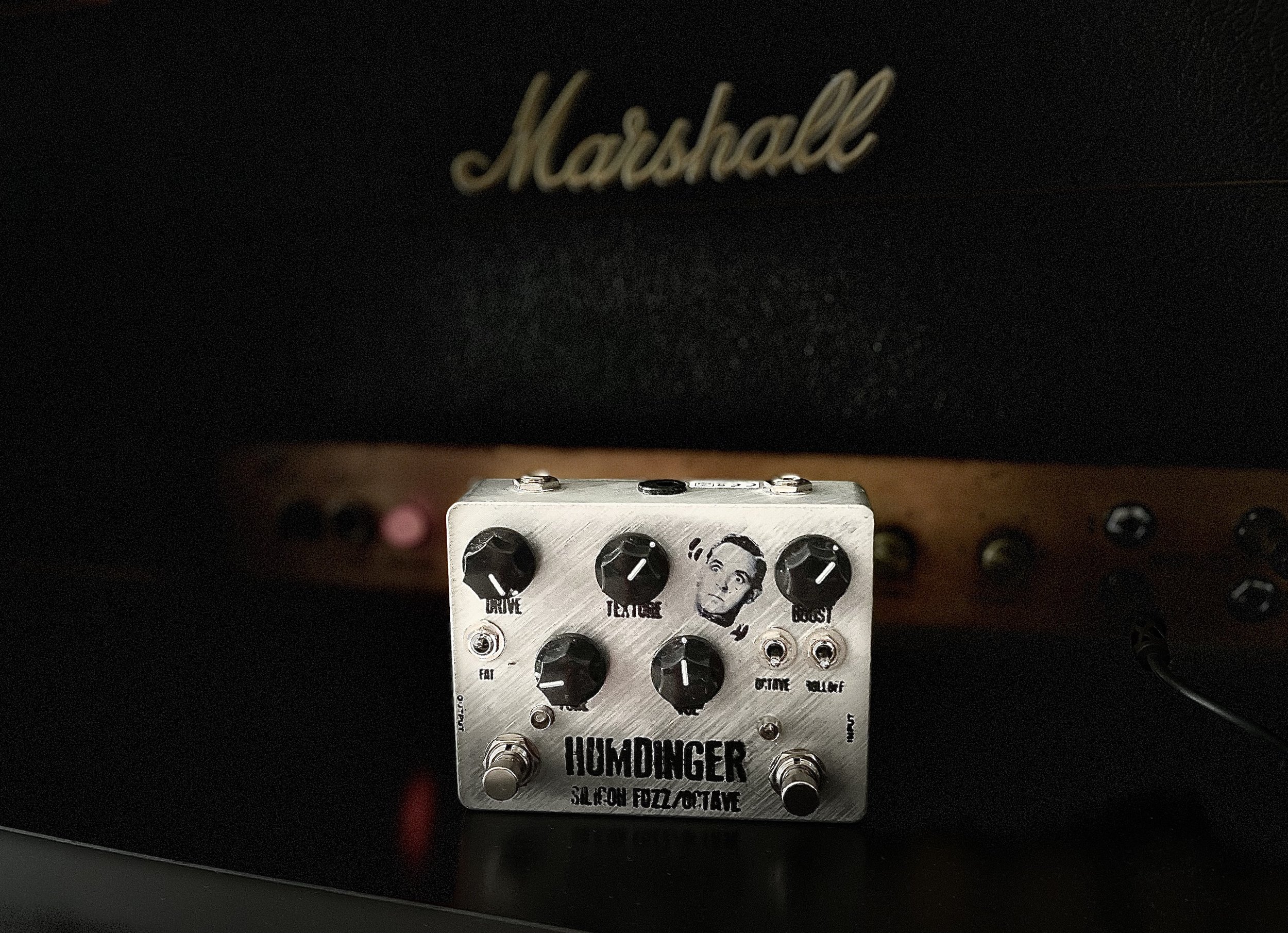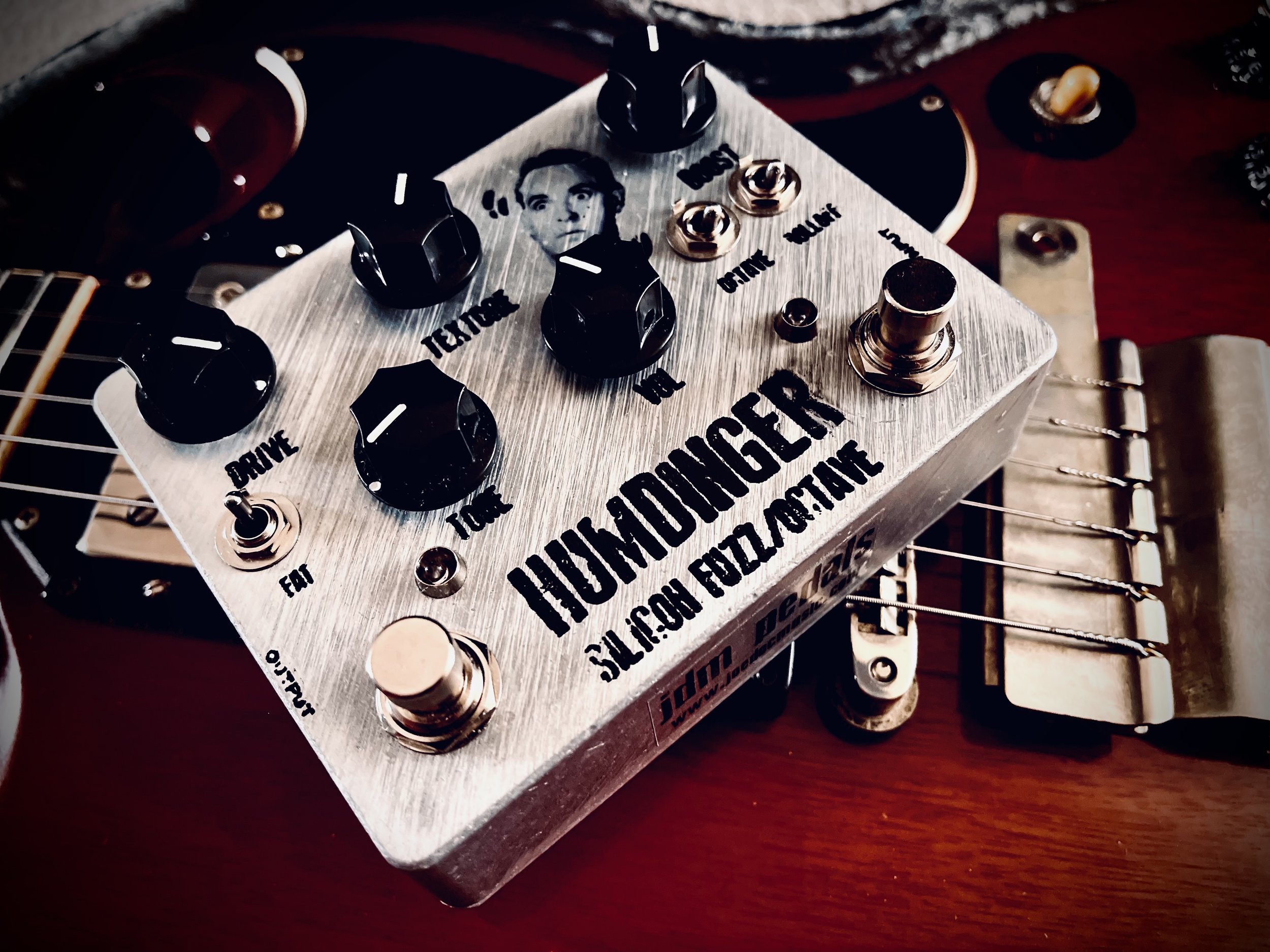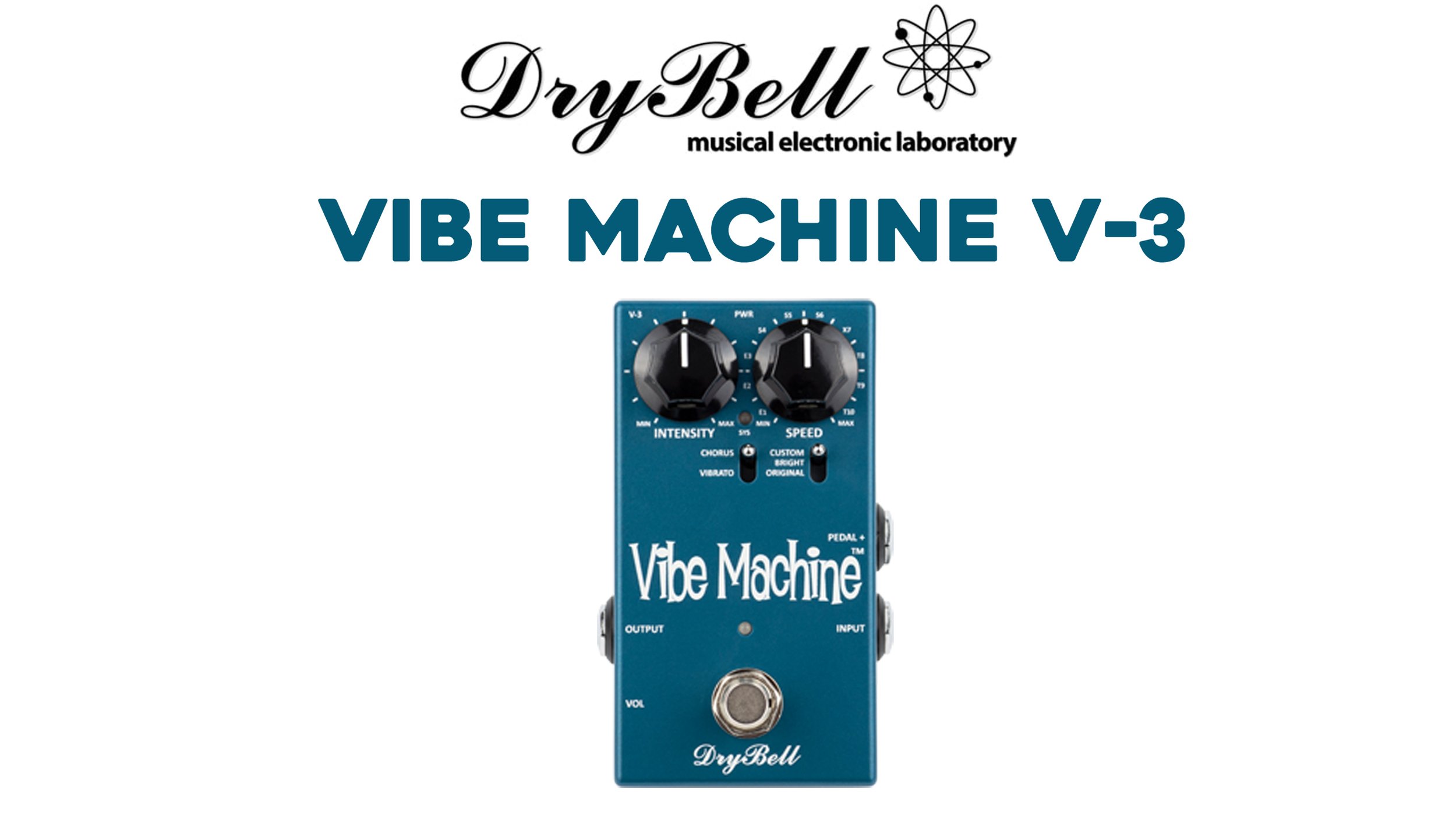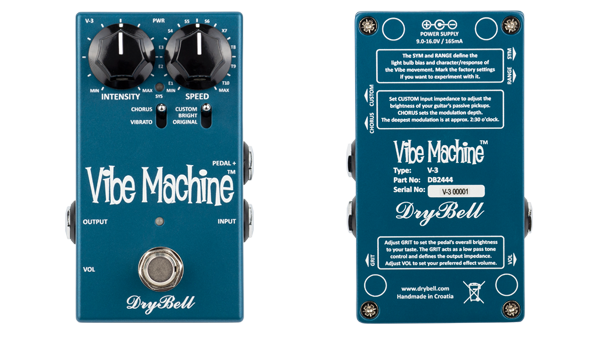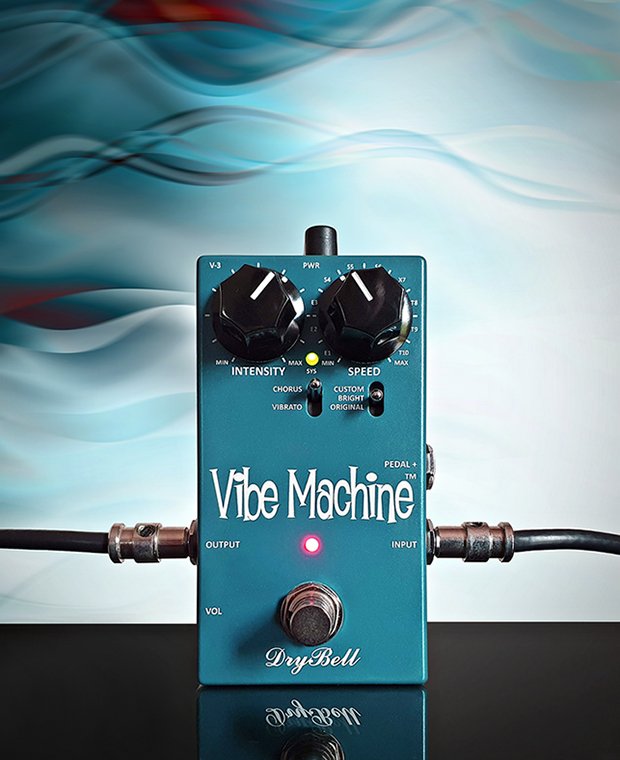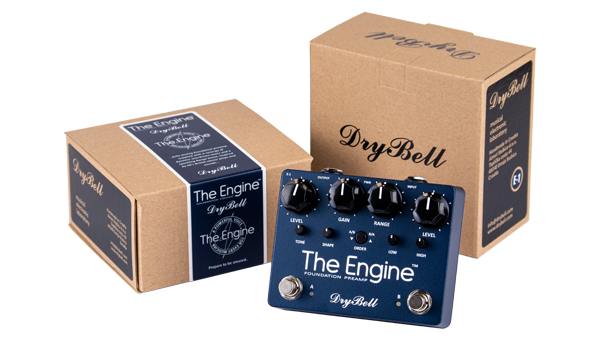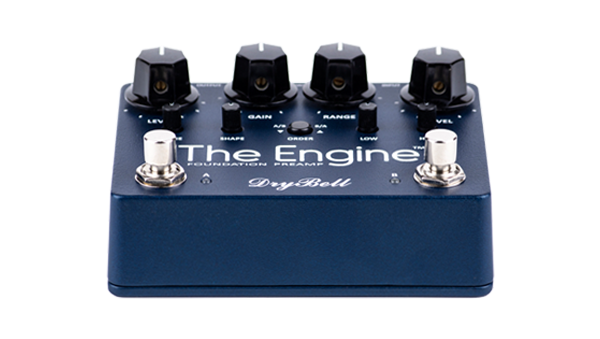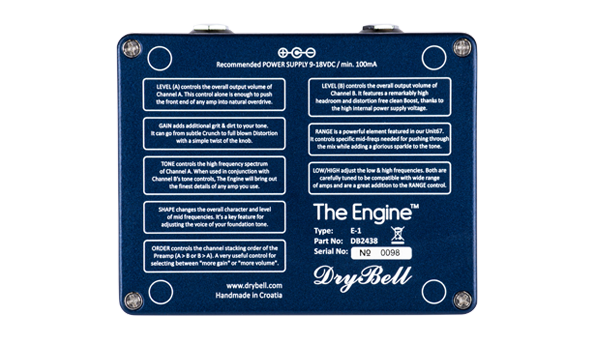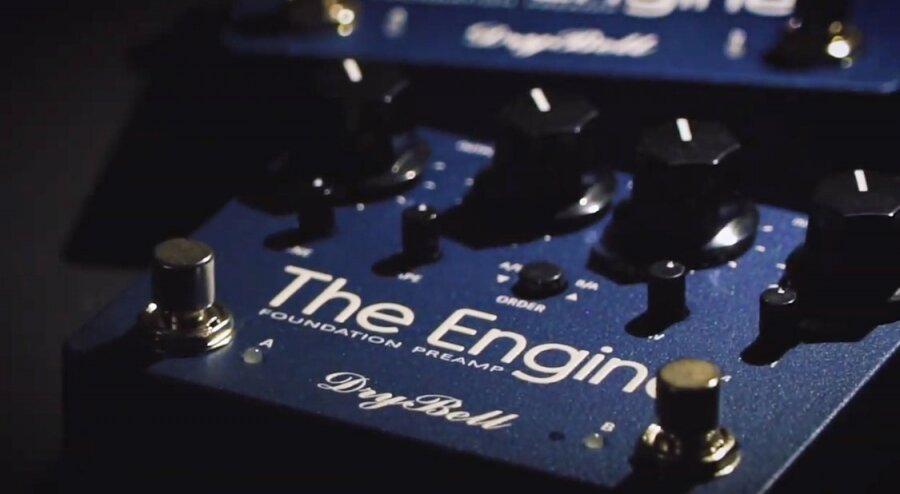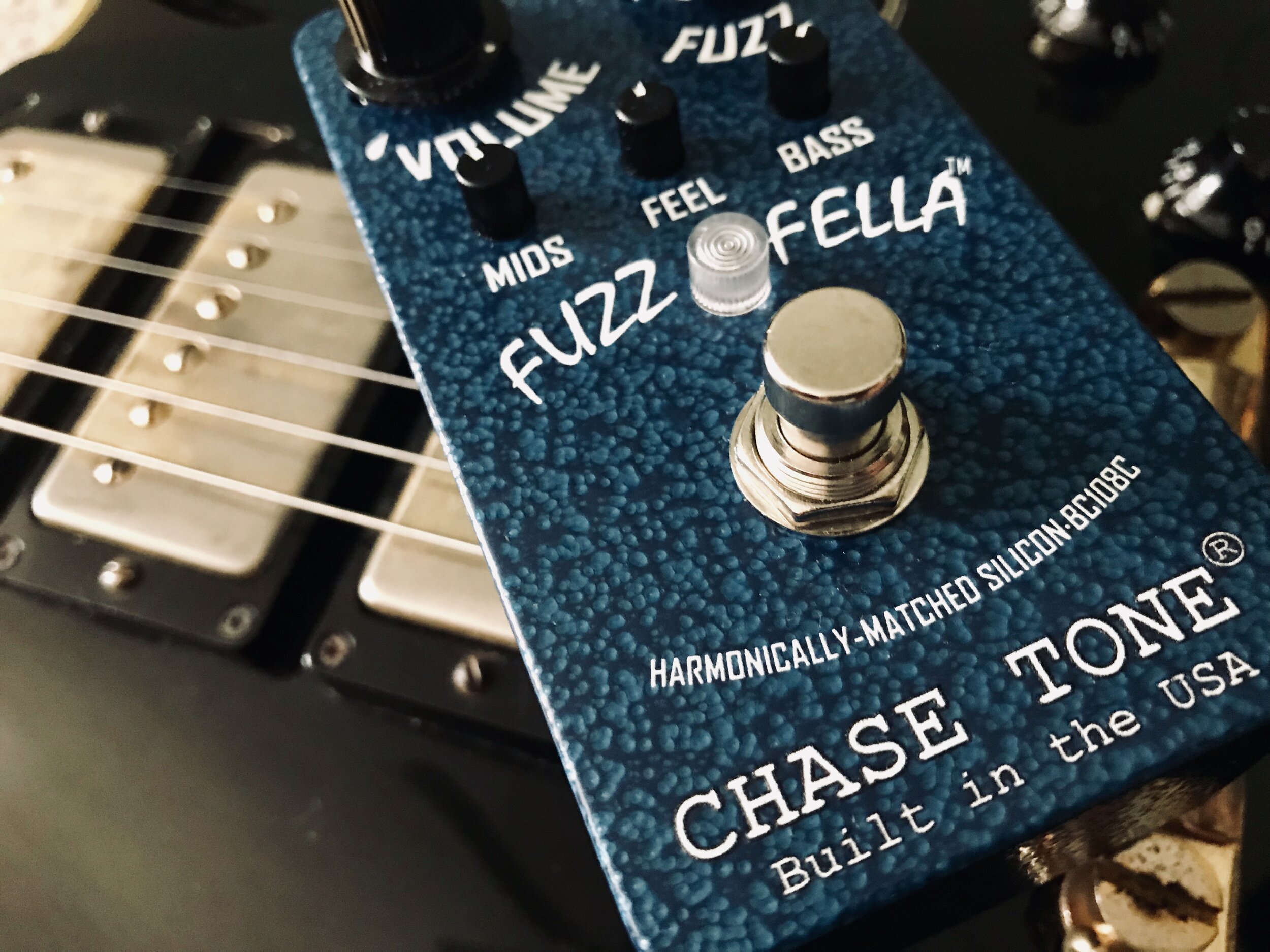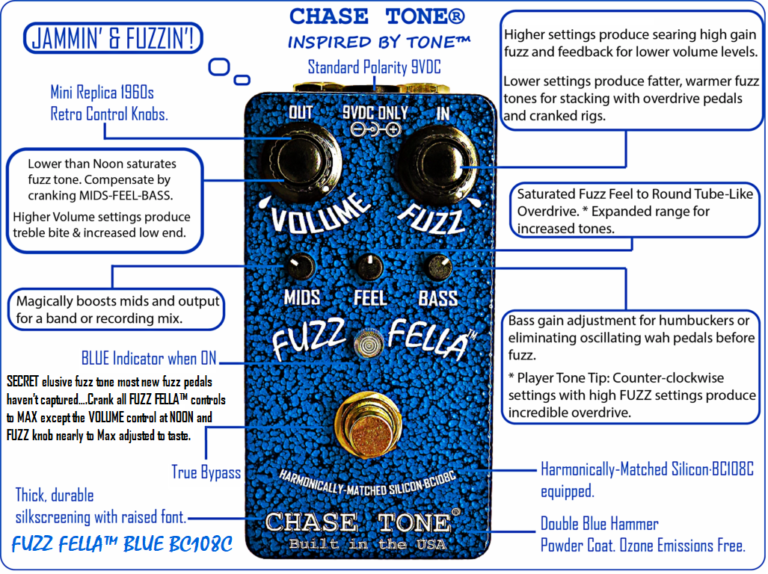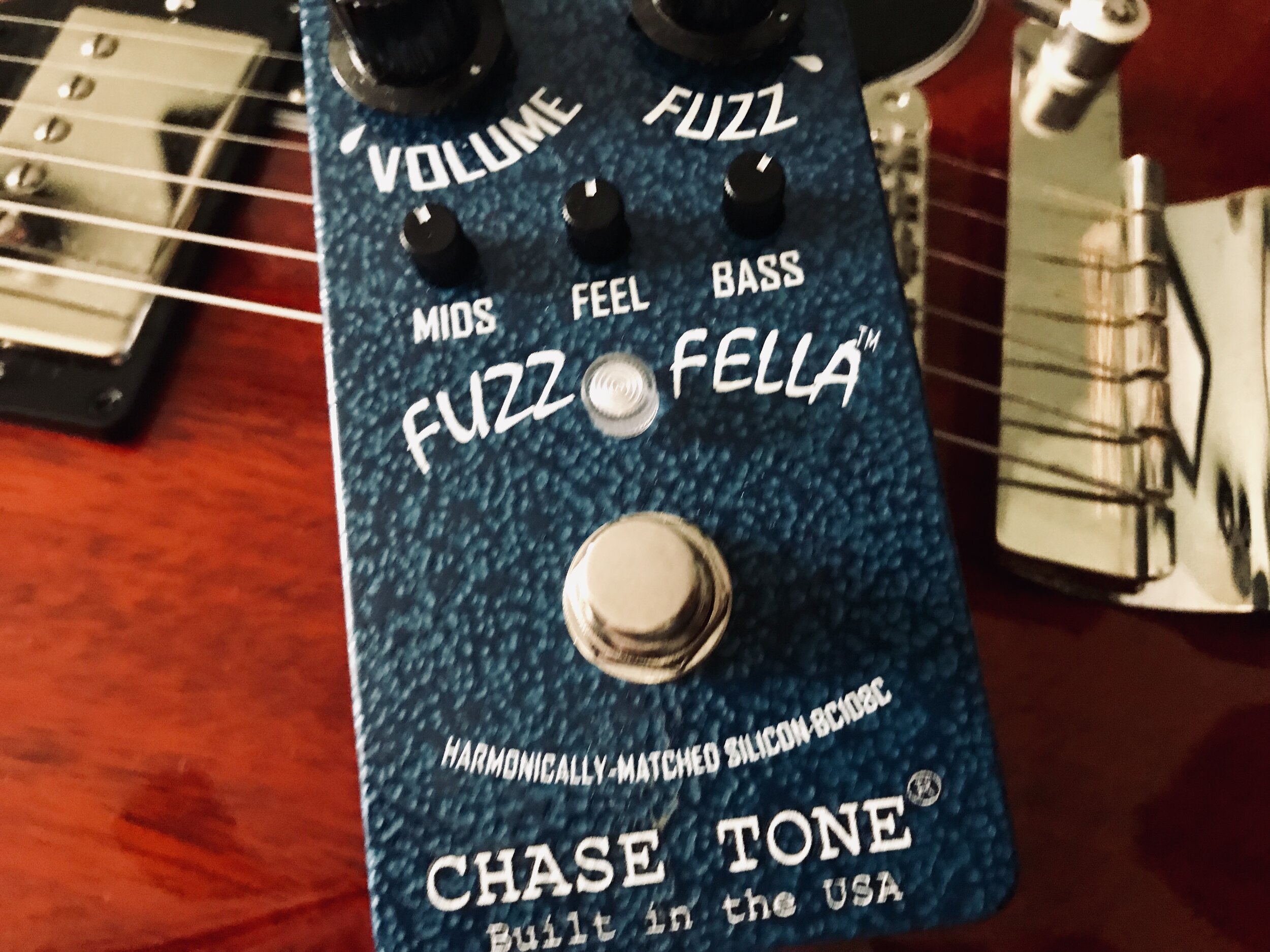Welcome Gearheads!
Today I’ve got a unique offering to show you all… I happened upon this company by my Nashville based guitarist pal Brett Moore. Brett’s as much a gearhead as I am and knowing my penchant for fuzz pedals he said I had to try this “sleeper of the year” Humdinger Fuzz from JDM Pedals. Well, Brett’s right as he often is and I was completely flabbergasted by it’s simplicity, tone, versatility and ultimately the price JDM Pedals is cranking these out for. More on that later!
JDM Pedals is Joe Dochtermann or “Joe Doc Music”, who’s not just a builder but also a guitarist based in Berlin, Germany. Joe operates a unique website that’s reminiscent of the early days of the internet where you could enjoy a ‘one-stop-shop’ of an experience, taking in guitar lessons, blogs, DVD’s and eBooks and of course hand built pedals! There is a decidedly DIY aesthetic to the site and you can get really deep into what Joe’s offering. I absolutely recommend taking a look at all JDM is offering!
The Silicon Humdinger is not your typical Octave/Fuzz combo pedal. With it’s dead simple interface of knobs it yields a ton of tones that you can actually dial in to perfectly suit each guitar and amp combination you’re using. Usually, these types of pedals can be unruly and difficult to manage especially when switching back and forth between the Octave and Fuzz sides. If anyone has used a Prescription Electronics Experience pedal… well you know what I’m talking about here!
The SI Humdinger is as JDM mentions is a MUCH improved version of this type of circuit. Joe takes inspiration from the FOXX Tone Machine as most of these types of pedals do but in the simplest of terms, cleans up the the mess these pedals can have when you’re trying to use them in musical context. One of the most refreshing aspects to the Humdinger is the fact that you can use every single sound and option on it’s own or together. Everything works so well on the Humdinger and I can only imagine this was done out of the same frustrations we all have when trying to setup your tone with your gear. There are no limitations in utility or sound. It’s just a fantastic sounding fuzz.
The Humdinger is essentially 3 separate effects that can be used together. With the tonal shaping options you end up with widely versatile pedal. Here’s my list of the tones and tonal shaping I found to be super useful:
Fuzz (thin switch): Vintage Tone Bender
Fuzz (fat switch): Vintage Fuzz Face
Fuzz (Texture knob): Full and open all the way to gated and sputtery
Fuzz (Drive knob): Fuzzy overdrive to normal fuzz gain territories
Fuzz (Tone knob): An actual tone knob that works! Doesn’t mess with the chacter of the core tone
Fuzz (Volume knob): Master volume that can help the whole circuit sit right in the mix
Boost (Octave switch): Octavia tone that works all over the neck!
Boost (Boost Switch): Transistor style boost circuit with a great vintage character
Boost (High Roll-Off Switch): This pads the high end and gives you more low mids and takes away and ice pick in the top end
Boost (No Roll-Off): This is your fullest, most strident Octave tone and Boost tone.
Boost (Gain knob): A gain/master volume for the boost circuit
Phew! That’s quite a laundry list of available tones in the Humdinger. It’s the kind of pedal just just keeps surprising you as you get deeper into the controls. Unlike many fuzz pedals it works with everything I threw at it. Between the EQ cut controls, the tone knob and the texture control you’ve got so many different shades of fuzz at your feet. Being able to use the Boost side with Octave on or not by itself or stacked into the Fuzz… this thing truly is a Humdinger!
Being a transistor based pedal you still have to keep it before any buffering circuits like a true vintage fuzz pedal but the Silicon transistors at the core keep up the tone regardless of temperature fluctuations. I did find that the SI Humdinger was much less fussy where I put it in general and even after other buffered outputs it didn’t “freak out” in the way most vintage circuits can.
The JDM Silicon Humdinger is truly a special and surprising pedal. I can see having one of these on every pedalboard just for the fact that it can cover so many tones in a such a tonal and simple manner. I highly recommend this pedal for anyone who’s been wanting to get into fuzz but has either had problems previously with how difficult they can be or for the full fuzz addict like myself… I guarantee you WILL be pleasantly surprised! JDM is making some crazy good products for what seems like reasons of passion and not profit in the typical sense… these are retailing for $169 direct! For an extremely well thought out design, hand built by one person… that’s a steal folks! Take it from me, I’ve owned and tried probably what would amount to the world’s share of fuzz pedals… this is a KILLER fuzz at ANY price point.
On the video demo below, I used the SI Humdinger on all the guitars and bass in the track as per usual. Amazing little pedal this Humdinger! Stay tuned for a future feature on the Germanium version of the Humdinger!
Thanks for checking this Gearheads Feature on the JDM Silcon Humdiner Fuzz/Octave. If you’d like to learn more about Joe and all that Joe Doc Music is up to, please do check out these sites for more information.
https://www.joedocmusic.com/jdm-pedals-humdinger-silicon-fuzz-octave-pedal/
https://www.facebook.com/JDM-Pedals-1792051797784922/
Until next time Gearheads, please take a moment to Like, Subscribe & Share this Feature and I’ll see you all very soon!

